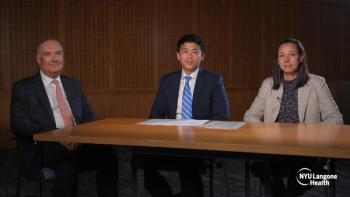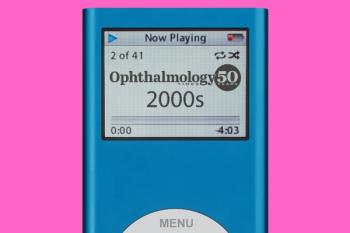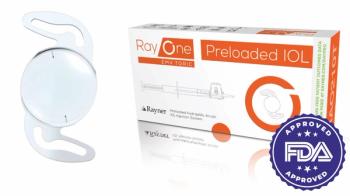
How to make the right lens choice
There is a moralistic responsibility that all eye-care professionals should follow to make sure their patients choose the correct eyewear to prevent injury, especially when the patients are children.
Take-Home:
There is a moralistic responsibility that all eye-care professionals should follow to make sure their patients choose the correct eyewear to prevent injury, especially when the patients are children.
By Rose Schneider, Content Specialist, Ophthalmology Times
Dr. Miller
Eye-care professionals (ECPs) have an ethical as well as legal responsibility to inform their patients regarding lens material options and safety, said Pamela Miller, OD, JD, of Highland, CA.
However, patients may still be unfamiliar with their choices.
According to a PPG Industries-sponsored study, while patients have an interest in lenses with various features, they need more education on their options by ECPs.
“Survey respondents reported a tendency to defer to an ECP’s recommendation when selecting a lens material,” the 2012 study said. “The research indicated a general lack of awareness about lens material options, with nearly 67% of respondents reporting that they didn’t know which lens material was used to make their eyeglasses.”
While Dr. Miller said she is unsure how often ECPs or their staff spend time going through the various lens options and safety with their patients, she believes they ought to-especially when those patients are children, as they are more prone to injury.
“It’s just part of how you take care of patients,” Dr. Miller said of the ethical practice, Duty to Warn, which is an integral part of that process.
Backstory of the concept
The Duty to Warn concept, in regard to the eyecare field, originated in the late 1980s following several court cases involving patients who were injured when their eyeglasses broke.
The courts found that the ECPs were liable for the injuries sustained because either higher-impact-resistant lens material was available in the patient's correction or the patient was not informed of their viable options.
Soon after, Dr. Miller, along with Joe Bruneni, FNAO, of Vision Consultants, helped develop the Duty to Warn kit-an informative package on the concept-that is sent to ECPs.
ECPs then began following the Duty to Warn procedure, which includes:
· Informing patients about the higher-impact-resistant lenses
· Going through the pros and cons of each product
· Having the patients sign a form stating they were properly informed and have either chosen to take the ECP’s suggestion or knowingly refuse it.
More than 20 years later, Dr. Miller said the concept is as important as ever for ECPs.
“As knowledge increases and products improve and increase, our obligations pretty much increase as well,” she said. “Your job is to protect your patient.”
Protecting children from eye injuries
That obligation becomes even more important when dealing with children, Dr. Miller said.
There are more than 100,000 people who sustain eye injuries every year and more than half of those injured are children, according to the American Academy of Ophthalmology (AAO).
“Children are at a higher risk of injury, children are not as careful,” Dr. Miller said. “They are more prone to injury (and) they are more heavily involved in sports.”
More than 42,000 sports- and recreation-related eye injuries were reported in 2000, according to the American Academy of Pediatrics (AAP) and AAO.
Of that total, AAP and AAO said 72% of the injuries occurred in individuals aged fewer than 25 years old, 43% occurred in those aged fewer than 15 years old, and 8% occurred in children aged fewer than 5 years old.
“Although eye protectors cannot eliminate the risk of injury, appropriate eye protectors have been found to reduce the risk of significant eye injury by at least 90% when properly fitted,” AAP and AAO jointly said.
Polycarbonate or High Index best choice for children
In patients who are aged fewer than 18 years, Dr. Miller said ECPs should always recommend the higher-impact-resistant lenses, such as polycarbonate.
“In my practice, we basically automatically prescribe polycarbonate for children,” she said.
There are some parents, however, who are apprehensive to purchase polycarbonate lenses for their child, Dr. Miller said, despite strong research suggesting they are the safest lenses for young people.
“Polycarbonate lenses are thinner and lighter than standard plastic varieties, but much more durable,” according to The Vision Council. “Polycarbonate is ideal for strong prescriptions because it corrects vision without adding thickness, which can distort the wearer’s appearance.
“Best of all, polycarbonate lenses are virtually unbreakable, making them a great choice for kids and active adults,” the council said.
But the cost of polycarbonate lenses, Dr. Miller said, most commonly drives parents toward the more cheaper, yet less safe eyewear options.
“CR-39 is more likely to break and shatter, it is not as safe,” she said. “(Unfortunately) it always comes down to money.”
There is a $30 to $65 upcharge difference from the CR-39 to the polycarbonate lens for a standard single-vision prescription, said Arthur De Gennaro, president of Arthur De Gennaro & Associates LLC, a Lexington, SC-based ophthalmic practice management firm that specializes in optical dispensing issues.
If parents insist on CR-39, or lenses other than polycarbonate for their child, Dr. Miller said it is the ECP’s responsibility to make the parents’ decision clear to them, which is when Duty to Warn comes into place.
“It is the obligation of the practitioner to warn and advise the patient-and in this case the patient and the parent or guardian-of the pros and cons of a particular product,” Dr. Miller said. “(But) the bottom line is the parent or guardian is under no obligation to accept your recommendation, but you’re under obligation to lay them out.”
In abiding by the practice, Dr. Miller said ECPs are enabling the decision-maker, in this case the parents, to make an informed decision.
“It (Duty to Warn) puts the person who has more information or more knowledge in an obligatory position of warning the person who will be receiving the materials,” she said.
While ECPs are not legally bound to follow Duty to Warn-as there are no laws mandating they do-Dr. Miller said the practice should be followed simply because it is the right thing to do.
“It becomes an ethical consideration,” Dr. Miller said. “You don’t have to do it, you don’t have to do anything.
“(But) it’s the appropriate thing to do to protect the patient, as well as your practice,” she said.
Pamela Miller OD, JD
Dr. Miller has no financial interest in any products or companies mentioned in this article.
Newsletter
Don’t miss out—get Ophthalmology Times updates on the latest clinical advancements and expert interviews, straight to your inbox.






















































.png)


